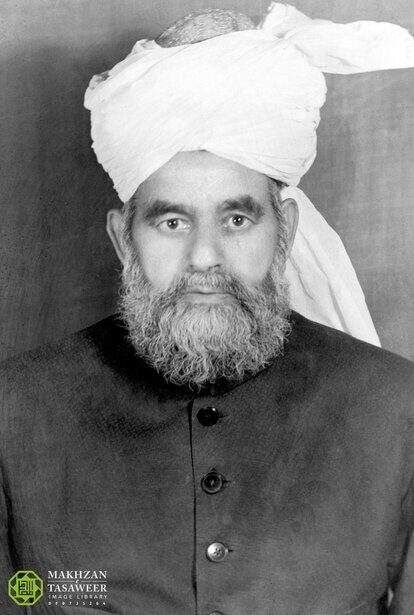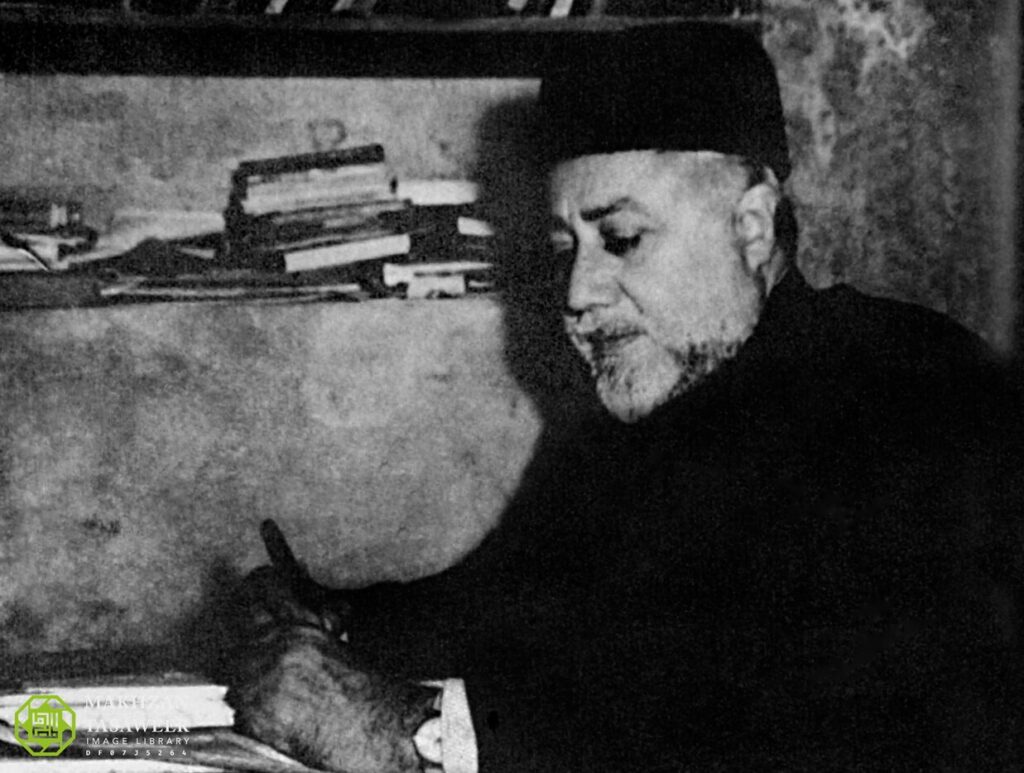31 December 1946: Hazrat Maulvi Syed Zia-ul-Haqra passed away. He was amongst the 12 early and famous companions of the Promised Messiahas from Odisha, East India.
He first came to Qadian in 1902 and he served and rendered great service as amir of Jamaat Songara, Odisha.
Due to his success in tabligh, opponents plotted to kill him. He was an expert in Arabic, Urdu, Persian and the vernacular Odia. He used to deliver darses of the Holy Quran very well. (Tarikh-e-Ahmadiyyat, Vol. 9, p. 617)
31 December 1959: During US President Eisenhower’s four-day visit to India, when he was taken to Delhi for a tour, he was gifted with literature from Qadian. In reply to this, the US minister of foreign affairs wrote to Sahibzada Mirza Wasim Ahmad Sahib in which he expressed his deep gratitude and stated that the president appreciated this gesture. (Al Fazl, 9 March 1960, p. 3)

1 January 1933: Hazrat Musleh-e-Maudra, along with other members of the Promised Messiah’sas family, enjoyed a ride in an aeroplane for the first time as the famous pilot, Mr Chawla landed in Qadian with his small plane.
Mr Chawla had a small three-seater aircraft and intended to set a record by travelling to London on it. He, therefore, appealed to the maharajas and nawabs of the Indian states for donations. A copy of his letter also reached Hazrat Khalifatul Masih IIra. Huzoorra wrote to him that if he brought his aircraft to Qadian and gave some people a chance to ride in it, he would give a donation of five hundred rupees.
So, on 30 December 1932, he took his aircraft to Qadian. The next day, he met with Huzoorra. At 11 o’clock in the morning on 1 January 1933, Huzoorra and Hazrat Mirza Sharif Ahmadra boarded the aircraft with Mr Chawla. The aircraft flew away from Qadian to the east and soon disappeared. Seeing this, members of the Jamaat became anxious. After landing, Huzoorra said that he had told Mr Chawla to take him to the Beas River so that he could see the area from Qadian to the Beas River from above. At the behest of Huzoorra, many elders and children had the chance to board the aircraft too.
1 January 1936: Hazrat Syed Nasir Shahra, a companion of the Promised Messiahas, passed away. Hazrat Shah Sahibra was a very sincere companion of the Promised Messiahas. Once, when Hazrat Ahmad’sas book Nuzul-ul-Masih, due to a lack of funds, came to a halt in publication, Hazrat Shah Sahibra took leave from his job and presented a sum of money to the Promised Messiahas to be used for the book. Huzooras accepted his donation. (Tarikh-e-Ahmadiyyat, Vol. 7, p. 321)
1 January 1966: There was a risk of famine and drought in Pakistan due to a lack of rain. Hazrat Khalifatul Masih IIIrh urged Ahmadis to dedicate two prostrations of nawafil for the next seven days and pray for rain. Upon Huzoor’srh instruction, Hazrat Maulana Jalaluddin Shamsra led Salat-ul-Istisqa (prayer for rain) on 6 January in Rabwah. (Al Fazl, 8 and 12 January 1966, p. 1)

2 January 1929: Hazrat Maulvi Muhammadra, a companion of the Promised Messiahas, passed away. (Tarikh-e-Ahmadiyyat, Vol. 5, p. 161)
2 January 1976: Hazrat Khalifatul Masih IIIrh, under the Waqf-e-Jadid scheme, encouraged members of the Jamaat to take up honorary life-devotion (waqf). That is, members of the Jamaat should stay in the markaz for three months and attain religious education so that the moral training of the Jamaat can progress.
Huzoorrh also directed the construction of rooms to accommodate guests on the occasion of Jalsa Salana because in 1974, the government of Pakistan had taken into their possession some buildings of the Jamaat worth about 50 million rupees which were in the form of schools and colleges. For this reason, there was a risk of problems in accommodating guests at the next Jalsa Salana. (Khutbaat-e-Nasir, Vol. 6, p. 269)
3 January 1930: Renowned Muslim leader, Maulana Shaukat Ali visited Qadian on this date. He had led the Khilafat Movement that was initiated in response to the fall of the Ottoman Empire. He was also the brother of the renowned political leader, Muhammad Ali Jauhar, and Hazrat Maulvi Zulfiqar Ali Khan Goharra. (Tarikh-e-Ahmadiyyat, Vol. 5, p. 240)
3 January 1935: Hazrat Pir Siraj-ul-Haq Numanira of Sarsawa, India passed away at the age of 80. He was a well-known spiritual leader with a large following, prior to accepting the Promised Messiahas. He recorded the life of the Promised Messiahas in his book Tazkiratul-Mahdi.
On 23 December 1889, Hazrat Pir Siraj-ul-Haq Numanira arrived in Qadian and pledged allegiance at the hand of Hazrat Ahmadas and by September 1899, he had migrated to Qadian. He used to make copies of Hazrat Ahmad’sas writing, performed scholarly works, performed the duty of correspondence for Hazrat Ahmadas and stayed in the company of Hazrat Ahmadas during his travels.
Hazrat Musleh-e-Maudra led the funeral prayer of Hazrat Pir Siraj-ul-Haq Numanira, who was buried in Bahishti Maqbarah Qadian.

4 January 1931: Upon the demise of Maulana Muhammad Ali Jauhar, Hazrat Musleh-e-Maudra expressed his condolences. Maulana Muhammad Ali Jauhar was an Indian Muslim independence leader, activist, scholar, journalist and poet. He was also among the leading figures of the Khilafat Movement. He was the younger brother of Hazrat Maulvi Zulfiqar Ali Khan Goharra.
On the orders of Huzoorra, nazarat umur-e-kharjia (the Jamaat’s directorate for foreign affairs) had sent a telegram expressing condolences to Maulvi Shaukat Ali, the brother of Maulana Muhammad Ali Jauhar.
The Al Fazl newspaper wrote a note on the demise of this Muslim leader and paid tribute to his scholarly contributions. (Tarikh-e-Ahmadiyyat, Vol. 5, p. 311)
4 January 1952: Hazrat Musleh-e-Maudra directed the central administrative offices of the Jamaat to draw up a list of projects in detail that needed to be completed during the year. He also instructed that the projects be completed within the given timeframe. (Khutbaat-e-Mahmud, Vol. 33, p. 1)
5 January 1944: In the night between 5 and 6 January, Hazrat Musleh-e-Maudra was shown in a vision that he was the person mentioned in the Promised Messiah’sas announcement of 20 February 1886 that spoke of a “promised son”. At the time, Huzoorra was staying in Lahore at Sheikh Bashir Ahmad Sahib’s residence located on 13 Temple Road.

5 January 1945: Hazrat Musleh-e-Maudra instructed that every Ahmadi family must ensure that at least one person from their family devoted their lives to serve the Jamaat.
Huzoorra explained that the work of tabligh and spreading religion could not solely be done with finances, but the efforts of people were also required. (Khutbaat-e-Mahmud, Vol. 26, p. 1)
6 January 1942: Hazrat Chaudhary Hakim Alira of Chak Paniar, Gujrat, a companion of the Promised Messiahas, passed away.

When the cousins of the Promised Messiahas built a wall in the street in front of Huzoor’sas house in Qadian to cause his guests inconvenience, Hazrat Ahmadas intended to migrate. Hazrat Hakim Maulvi Nuruddinra requested Huzooras to migrate to Bhera, while Hazrat Maulana Abdul Karim Sialkotira invited Huzooras to settle in Sialkot; Hazrat Sheikh Rahmatullahra invited Huzooras to Lahore and Hazrat Chaudhry Hakim Ali Sahib invited Huzooras to his village of Chak Paniar in Sargodha.
6 January 1945: Hazrat Hafiz Mirza Nasir Ahmadrh, then principal of Talim-ul-Islam College, was elected as a member of the academic council of Punjab University for 1945-46. The principals of concerned intermediate colleges elected him unanimously.
As soon as Talim-ul-Islam College was established, its reputation grew due to its teaching standards. This had an effect not only on the province of Punjab but on the whole country. (Tarikh-e-Ahmadiyyat, Vol. 9, p. 63)


